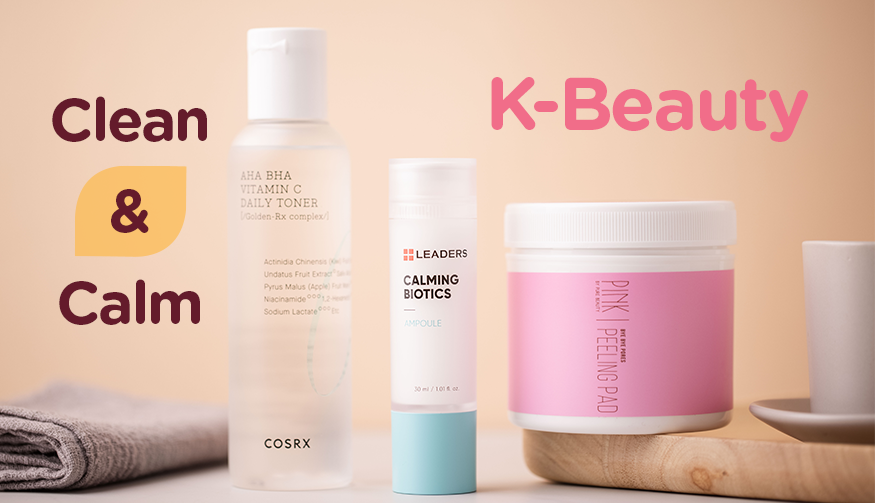Exfoliating helps remove dead cells from the surface of your skin, keeping your skin looking healthy and youthful. Discover more on the difference between chemical and physical exfoliation and learn how to exfoliate safely and properly.
Chemical vs. Physical exfoliation
Chemical and physical exfoliants technically do the same thing—slough off dead skin, but they do so in very different ways. The difference between the two of them is all in the name.
Chemical exfoliants remove dead skin cells with the use of chemicals, such as A.H.As, B.H.As to aid in cell turnover., while physical exfoliation involves using abrasive substances to physically slough away the outermost layer of the skin, like grains, seeds, or ground nut shells.

How to exfoliate safely and properly?
If you use a scrub or chemical exfoliator, apply the product gently using small, circular motions for about 15 seconds. Then rinse off with lukewarm water.
Remember that exfoliating your face should only be done about one to two times a week, as exfoliating too often or too hard may cause damage on your skin’s surface and strip your skin’s protective layer.

Signs of over-exfoliation
When it comes to exfoliation, physical or chemical, it is possible to have too much of a good thing for your face. Generally, skin should be exfoliated only one to two times per week to help expedite skin cell turnover without causing damage.
So, how can you tell if you’re over-exfoliating and need to give your skin a break? What to do when that happens? Common signs that you are overdoing it:
- Oilier skin
- Redness
- Irritation
- Dry, flaky skin

What to do if you over-exfoliate?
The first thing to do is stop exfoliating till it is healed. Use a gentle cleanser, barrier cream and SPF to rebuild and repair the skin barrier in your daily skincare routine. You’re just need to give your skin time to heal, and it could take as long as a month for your skin to get back on track.












